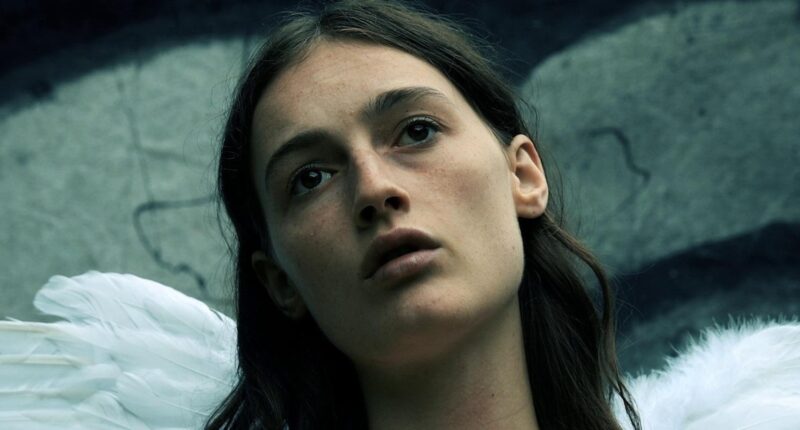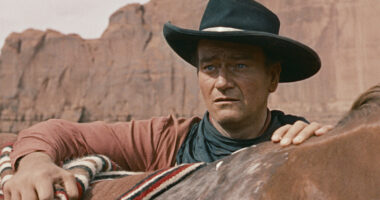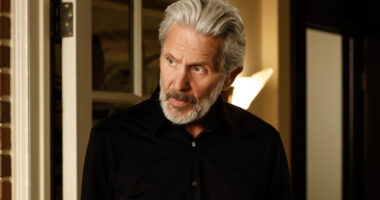Share this @internewscast.com
In today’s cultural landscape, where horror movies have transcended being niche and are largely considered mainstream, it is often challenging for such films to receive the critical acclaim they deserve. Horror movies are frequently dismissed as mere collections of jump scares and uninspired attempts to scare audiences. Although many lackluster horror films do exist (like “The Devil Inside” and “One Missed Call,” which are often cited among the worst of the genre), this is an issue that affects every cinematic genre. At their finest, horror films can stand on par with the best offerings from any film genre. Fortunately, prominent film critics often highlight the unique qualities and creative achievements of exceptional horror films. Yet, it’s a rarity for a horror movie to achieve universal praise: On Rotten Tomatoes, as of now, only nine horror films have attained a flawless 100% rating on the Tomatometer.
The diversity among these nine films is particularly thrilling. Rather than being works from a single director or a specific style of horror, these remarkable movies span a wide range of cinematic history, each with its own aesthetic approach. Whether it’s found footage or silent horror, these films cover a broad spectrum to deliver exciting results. Ultimately, horror can take any form—it often revolves around extracting unexpected terror from ordinary situations. These nine films vividly demonstrate this, showcasing horror’s unique capabilities and its potential to both excite and inspire viewers.
Frankenstein (2015)
The 2010s were not particularly noteworthy for “Frankenstein” adaptations. The year 2014 saw the release of the poorly-received “I, Frankenstein,” which offered a dull interpretation of Mary Shelley’s classic. This was followed by “Victor Frankenstein” in late 2015, a Thanksgiving release that failed at the box office despite featuring the talents of James McAvoy and Daniel Radcliffe. However, not all “Frankenstein” adaptations from this period were destined for obscurity. Writer/director Bernard Rose’s “Frankenstein,” released a few months prior to “Victor Frankenstein,” stood out. This version presented a new take on Frankenstein’s monster, Adam (played by Xavier Samuel), conceived by a pair of married, mad scientists. Rose’s script focuses on Adam’s encounters with the darker aspects of humanity, seen through his innocent perspective.
This obscure take on “Frankenstein” hasn’t scored many Rotten Tomatoes-approved reviews, but the reviews it does have all seriously praise it. In particular, this “Frankenstein” adaptation was lauded for its imaginative take on what would happen if Frankenstein’s monster was created in the modern world. Rose’s blending of intellectual and schlocky sensibilities was also a recurring source of praise in reviews, which echoed the adulation the filmmaker received when he helmed the original “Candyman” in 1992. There have been many versions of Frankenstein’s monster in the movies, but this particular take on the character sticks out for all the right reasons. This cult favorite “Frankenstein” adaptation provided a welcome contrast to the shoddy mid-2010s movies adapting the same material and is a must-see for fans of Shelley’s seminal novel.
Slumber Party Massacre (2021)
In the pantheon of 1980s slasher movies, “The Slumber Party Massacre” never quite became as big as “A Nightmare on Elm Street” and “Friday the 13th.” However, this title endured as enough of a cult favorite that a modern film cashing in on its brand name was inevitable. Such a project emerged in 2021, helmed by Canadian screenwriter and director Danishka Esterhazy, the mind behind the wacky horror comedy “The Banana Splits Movie.”
Like so many modern horror movies reviving franchises of years gone by, “Slumber Party Massacre” played with the saga’s legacy. In this case, new character Dana (Hannah Gonera) ends up getting stuck (with her pals in tow) in a town where original “Massacre” baddie the Driller Killer once rampaged and tormented Dana’s mom. This collision of the past and present was widely praised by critics, who especially appreciated how “Slumber Party Massacre” wasn’t afraid to be fun and silly, a hallmark of Esterhazy’s work.
Even with how much of a cult status the original film has garnered, an overly serious take on this material would have benefitted nobody. Instead, there’s a playfulness to this legacy sequel, which critics appreciated. Praise was also heaped on the unpredictable script and the many gnarly, gore-filled moments. It could have become just another bizarre slasher movie, but Esterhazy tows the line between tacky and terrifying perfectly. It’s no wonder 2021’s “Slumber Party Massacre” blew the critical reception of so many other horror legacy sequels out of the water.
The Most Dangerous Game (1932)
Actor and director Irving Pichel’s varied filmmaking career took him all over the place. Westerns, war movies, dramas, science fiction flicks — he had many strings to his bow. Interestingly, his debut directorial effort was also his first foray into horror. “The Most Dangerous Game,” an adaptation of the Richard Connell short story of the same name, concerns a man washing up onto an island where a wealthy figure is obsessed with hunting what he considers the perfect prey: other human beings. So begins a chilling cat-and-mouse game where stranded big game hunter Bob Rainsford (Joel McCrea) tries evading the cunning Count Zaroff (Leslie Banks).
More than 90 years after its debut, the critical track record of “The Most Dangerous Game” remains unblemished. Vintage and modern reviews are equally enthusiastic about the confidence Pichel exuded behind the camera in his first filmmaking effort. The feature’s expert building of tension has been hailed as one of the reasons why “The Most Dangerous Game” is so frighteningly absorbing, as have the excellent performances of McCrea and his co-star Fay Wray, who plays fellow shipwreck survivor Eve Trowbridge. One thing’s for sure: The leads aren’t sleepwalking through this story. They deliver the kind of richly detailed performances you would expect to find in the top drama films from this era.
Creep 2 (2017)
“Creep” unexpectedly became a cult favorite when it launched in 2014. Part of its success came from the way it centers much of the frights on an unexpected source: A serial killer played by the film’s screenwriter/leading man Mark Duplass. Known for his mumblecore indie films rather than being the heir to the Hannibal Lecter throne, Duplass makes for a perfectly chilling horror baddie. Seeing a guy who exudes believable normalcy also be so nonchalant about violence and possessing women really is shocking, and “Creep” leaves a lasting impression.
Once the “Creep” character of Aaron (Duplass) had been established, he couldn’t just be a one-off villain. Thus, Duplass and director Patrick Brice penned a “Creep 2” script. This time, Aaron lures YouTuber Sara (Desiree Akhavan) to his domicile so that she can chronicle his existence on camera for 24 hours (if she doesn’t, she’ll instantly get killed). This bizarre concept for a horror movie rife with tension (much of it based on whether or not Aaron will remain chill around Sara for long) was a hit with critics.
The endlessly compelling rapport between Aaron and Sara especially received kudos from viewers far and wide, while similar adoration was expressed towards the uniquely eerie atmosphere “Creep 2” conjured up. Most of all, “Creep 2” was viewed as a fantastic extension and expansion of the original film rather than a hollow retread. Once again, Duplass turned out to be the riveting horror icon people never knew they needed. “The character Duplass and Brice have created fascinates and amuses consistently here,” said The Hollywood Reporter in a glowing review. “Full of himself one moment, disarmingly self-critical the next, and afflicted by neuroses he may or may not be explaining honestly, Aaron is both funny and unsettling.”
The Golem: How He Came Into the World (1920)
Thanks to the works of trailblazers like George Méliès, horror storytelling has existed in cinema since the medium’s nascent days. The possibilities for delivering incredibly distinctive scares in this visual artform have been apparent from the start, meaning the silent era of filmmaking was full of horror features. One memorable title that every horror fan should see is “The Golem: How He Came into the World.” This Paul Wegener and Carl Boese directorial effort was a landmark title in the German Expressionism movement, in addition to being just a chilling motion picture in its own right.
Drawing from Gustav Meyrink’s 1915 text “The Golem,” the film chronicles the work of Rabbi Loew (Albert Steinruck) in 16th-century Prague as he builds and brings a Golem (Paul Wegener) to life so it can protect the local Jewish population. However, problems quickly arise since the Golem has been possessed by the malicious spirit Astaroth. This plot informed a movie that critics are still praising more than a century after its theatrical debut. While time can ravage certain movies once deemed classics, “The Golem” has only grown in estimation over the decades as people realize just how heavily it influenced (both visually and narratively) all corners of horror cinema.
The striking production design and imagery, not to mention the unnerving and varied performance from Wegener as the titular entity, have also been routinely praised. “The Golem” perfectly exemplifies how great horror storytelling has always existed within movies. The New York Times reviewed the German flick in 1921, calling it “Fascinating, exciting to the imagination, and yet so unfamiliar in all of its aspects that it always seems remote, elusive even, when one would like to get closer to its meaning.”
One Cut of the Dead (2017)
If you came to this list looking for a zombie flick that will take you completely by surprise, then stop reading and watch “One Cut of the Dead,” one of the scariest Japanese horror movies of the last decade. Trust us — it’s best to go in blind. If you want to know the hook, then read on, but don’t say we didn’t warn you. So what’s it all about? This indie horror-comedy from Shin’ichirō Ueda is an inspired riff on the found-footage subgenre that begins by depicting a ramshackle cast and crew trying to shoot a zombie film. As is often the case with film sets, nothing is going as planned. In order to get the results he wants, director Takayuki Higurashi (Takayuki Hamatsu) ends up unleashing real zombies on the cast, who suddenly have to go from remembering their lines to fighting for their actual lives.
“One Cut of the Dead” is an inspired commentary on how toxic filmmakers will treat humans as disposable in the name of making a buck. However, what made critics do cartwheels for this feature was also the genuinely frightening scares intertwined with the darkly humorous satire. The commitment to simulating an unbroken take for all the zombie mayhem (hence the title) also garnered praise. Ueda’s script pulling the rug out from under viewers to reveal further meta-layers only made “One Cut of the Dead” an extra riveting and unpredictable creation. The Los Angeles Times called the film “A master class in endless narrative inventiveness and an ode to the resourceful and collaborative spirit of hands-on filmmaking.”
His House (2020)
One fascinating recurring fixture across critically acclaimed horror movies is their willingness to delve into challenging and relevant socio-political matters. In confronting topics that many other movies would avoid like the plague, these horror titles reach an unexpected level of thematic depth, imbuing tremendous gravitas to unforgettable frights. A prime example of this is the 2020 title “His House,” which centers a ghost story around the hardships of South Sudanese refugees trying to adjust to their surroundings in an unwelcoming town on the outskirts of London. Scares here do not come from killers wearing hockey masks, but rather the fates of Rial (Wunmi Mosaku) and Bol (Sope Dirisu) being in the hands of nonchalantly racist social workers like Mark (Matt Smith).
Writer-director Remi Weekes is extremely skilled at making the human drama of “His House” plenty compelling on its own terms, even before it’s revealed that ghostly visions are tormenting Rial and Bol. Amplifying the absorbing nature of these characters is the outstanding lead performances, particularly Mosaku in her riveting turn as Rial. There are several motion pictures about tormented immigrant experiences even in the horror realm, but the imagery of “His House” instantly made it a one-of-a-kind artistic accomplishment. In a glowing review, the Los Angeles Times pointed out that “The script’s cleverest gambit is to blur our sense of what kind of movie we might be watching — a thriller about a haunted house or a portrait of the dehumanization of the refugee experience?”
Where the Devil Roams (2023)
“Where the Devil Roams” is a Depression era horror film about a group of sideshow carnival workers travelling the country. They also happen to be serial killers. Their troupe is dying, and so are the people who happen to cross paths with them. Unabashedly low budget and vicious in its slayings, “Where the Devil Roams” deeply impressed critics, with the trio behind it coming in for high praise: It’s written and directed by its three stars, Toby Poser, John Adams, and their daughter Zelda Adams, collectively known as the Adams Family.
Zelda’s sister Lulu Adams is also a member of this filmmaking family unit. All four worked on the 2021 indie hit “Hellbender,” which, with a Rotten Tomatoes score of 97%, almost made this list. “Where the Devil Roams” goes 3% better, with a perfect score on the Tomatometer. The Adams Family went to the next level with this gripping movie, including refining their gruesome practical effects and dreary atmospheres. Some critics even lauded a complicated tone that asked audiences to get emotionally invested in the carnie serial killers.
The overarching theme in reviews is that the Adams Family aim for a unique tone and never deviate from the vision. “Their collective filmmaking eye is still so compellingly intentional and full of riches,” wrote Nick Allen for RogerEbert.com. “Whether it’s with the desaturated color palette or later full black and white, the Adams are so gifted at filming bleak Americana, corpses, cloudy days, and rotting hands.”
Woodlands Dark and Days Bewitched: A History of Folk Horror (2021)
“Woodlands Dark and Days Bewitched: A History of Folk Horror” is different to the rest of the films on this list: It’s a documentary, but one that horror fans cannot afford to miss. This fascinating doc focuses on the complexities of folk horror movies, one of the richest veins for horror storytelling out there. It explores how folk horror came to dominate pop culture, from its origins to its modern renaissance in titles like “The Witch” and “Midsommar.”
Rather than settling for surface-level name drops of familiar horror movies, this 193-minute odyssey dives into various deeply specific cultural benchmarks from the history of folk horror. This allows the documentary makers to insightfully explore profoundly different manifestations of this material as well as what recurring themes across these stories keep luring people to the folk horror domain. It’s a labor of love for the creators, and it really shows.
Director Kier-La Janisse’s strong sense of pacing across this epic documentary, as well as how the production unearths new layers of thematic importance in deeply familiar works like “The Wicker Man,” secured widespread applause from critics. Writing for RogerEbert.com, Kristy Puchko pointed out how “the enthusiasm of all involved is absolutely infectious” before calling the doc “a resplendent treasure for horror lovers, sure to excite, inspire, and awe.”







